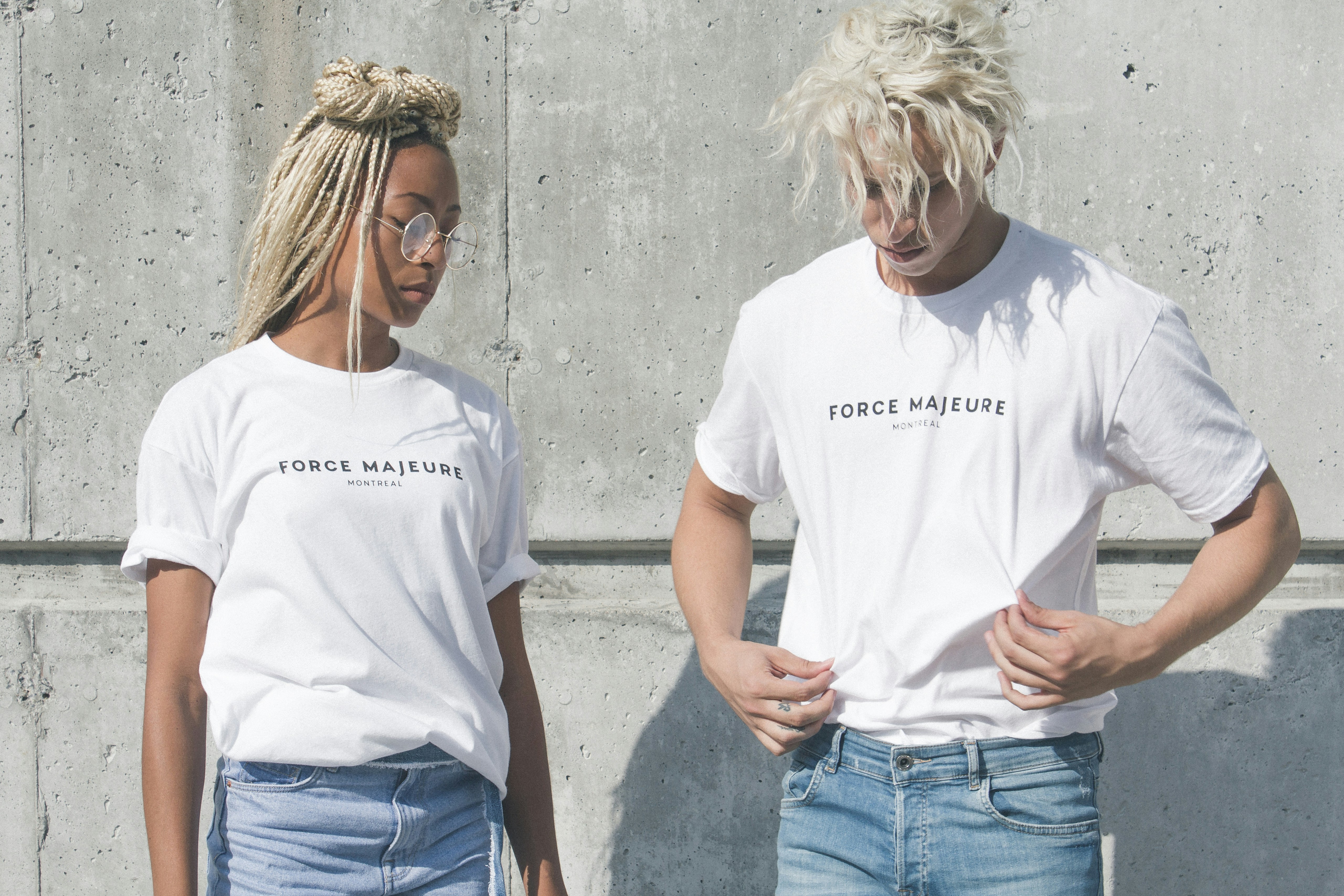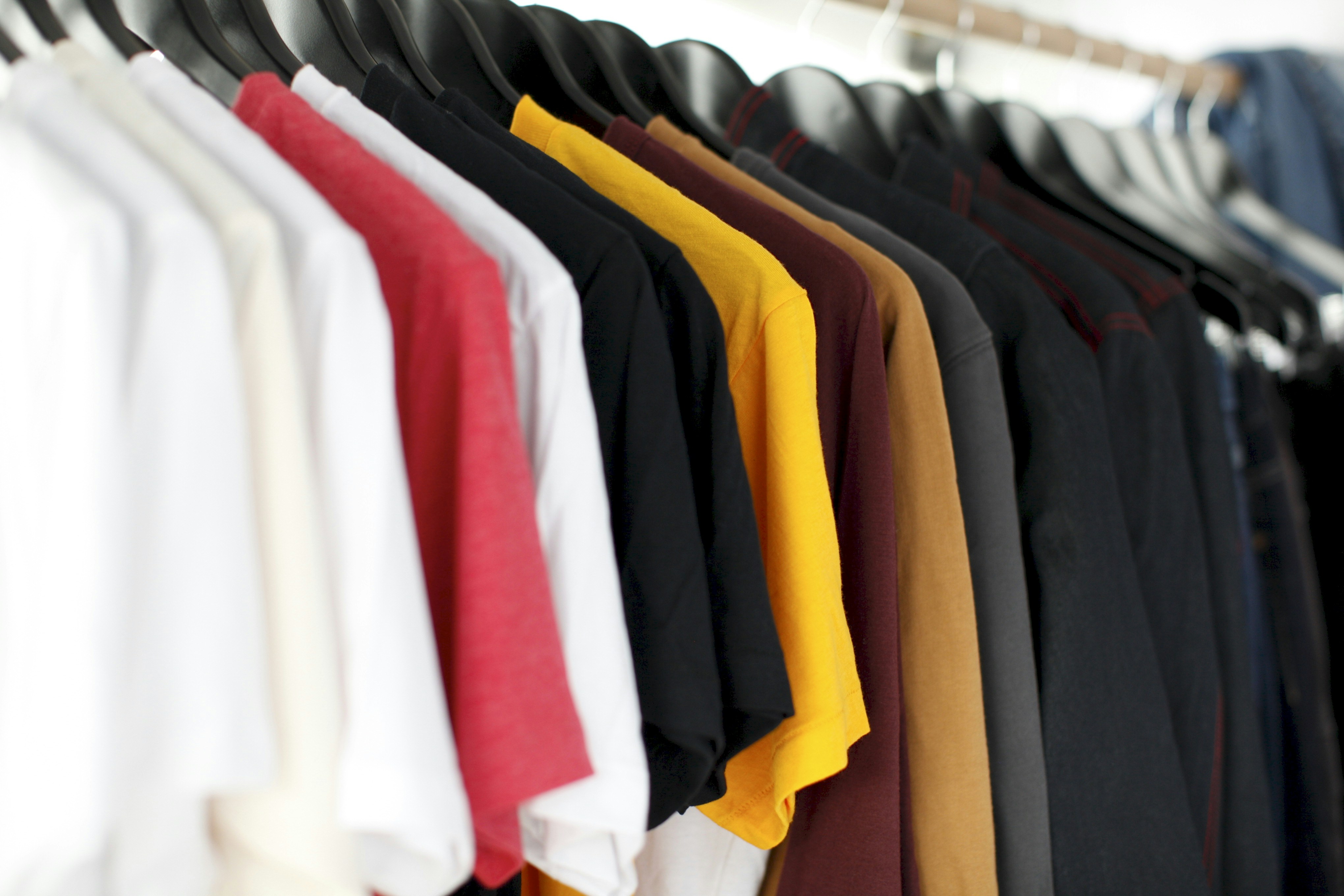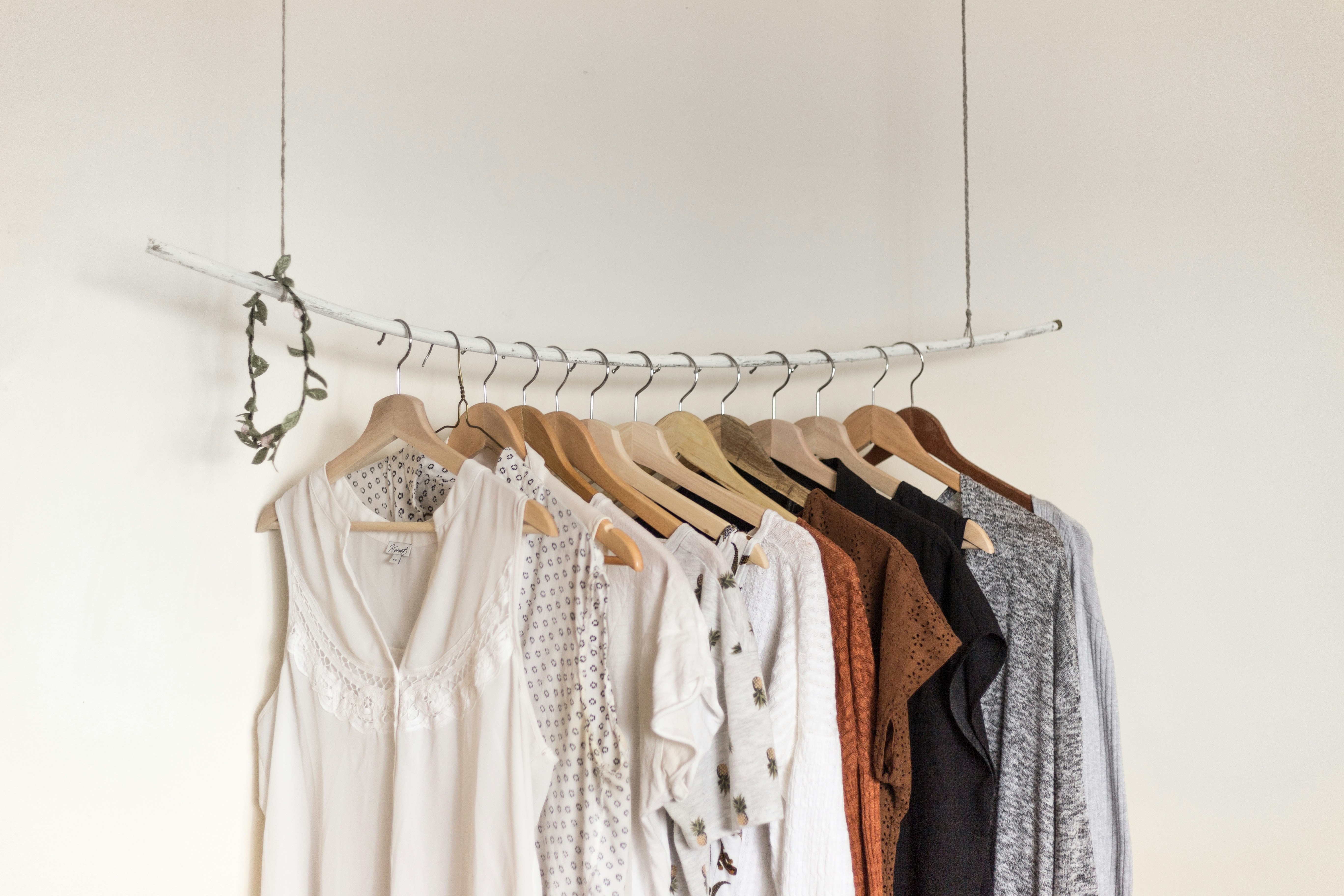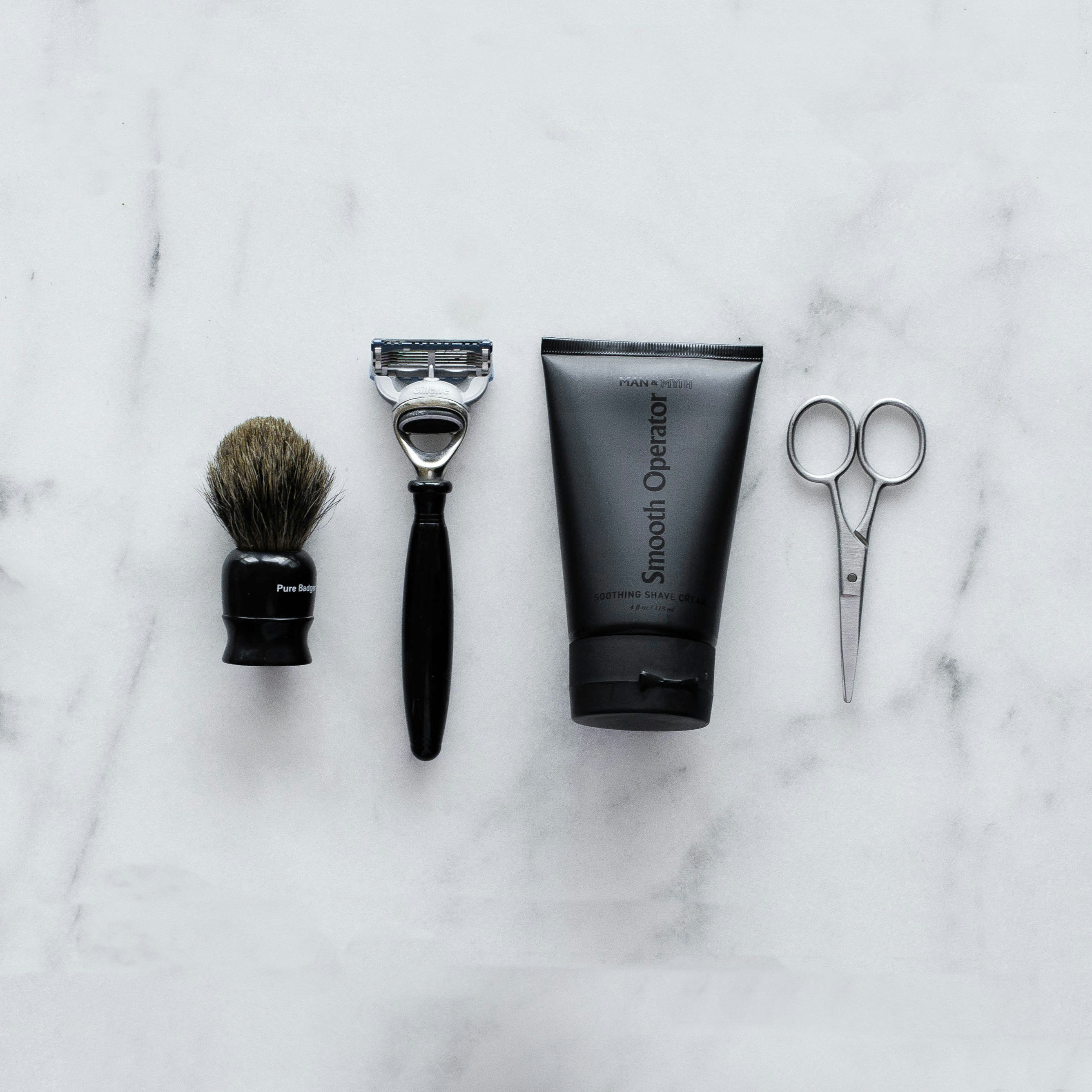Luxury Fashion Investment: Pieces Worth the Splurge
Malik Mohsin Saleem Khan
August 2, 2023 · 16 min read

Introduction
In an era of fast fashion and disposable trends, luxury fashion investments stand as a compelling counterpoint—offering exceptional craftsmanship, enduring design, and potential financial appreciation that transcends seasonal cycles. While luxury purchases require significant initial outlay, the finest pieces can provide both daily pleasure and long-term value, representing a more mindful approach to consumption that prioritizes quality over quantity.
This comprehensive guide explores the world of investment-worthy fashion, examining which luxury pieces genuinely merit their premium prices and how to select items that will retain or increase their value while delivering lasting style. From iconic handbags and heritage timepieces to bespoke tailoring and fine jewelry, we'll navigate the complex landscape of luxury fashion to identify pieces that represent not merely expenditure but genuine investment.
The Evolution of Luxury Fashion as Investment
The concept of fashion as investment has transformed significantly over recent decades, evolving from a focus on practical durability to encompass appreciation potential comparable to traditional asset classes. This shift reflects broader changes in luxury consumption patterns and growing recognition of exceptional fashion pieces as alternative investments with unique characteristics.
Historically, luxury fashion was valued primarily for its superior materials and craftsmanship, which ensured longevity in both physical condition and aesthetic relevance. Wealthy consumers purchased fine garments expecting years of use rather than financial returns. This perspective began shifting in the late 20th century as certain heritage brands implemented strategic practices that transformed their products into appreciating assets.
The luxury handbag market exemplifies this evolution. According to a 2020 report by Art Market Research, classic handbags have appreciated 83% in the last decade, outperforming traditional investments like art (12%) and wine (58%). Hermès pioneered this transformation through carefully controlled production, deliberate scarcity, and price increases that average 14.2% annually. This approach has created secondary market values that frequently exceed retail prices—a phenomenon previously rare in fashion.
Several factors have accelerated the investment potential of luxury fashion:
- Increasing wealth concentration globally has expanded the market for ultra-luxury goods
- Digital platforms have created efficient secondary markets with price transparency
- Growing disillusionment with traditional investments has driven interest in tangible alternatives
- Social media has amplified desire for status symbols and heritage pieces
- Sustainability concerns have enhanced appreciation for quality and longevity
Today's luxury fashion investment landscape encompasses diverse categories with varying appreciation profiles. While certain iconic accessories have demonstrated consistent value growth, other categories like ready-to-wear typically offer different investment propositions—focusing on cost-per-wear efficiency and style longevity rather than financial appreciation. Understanding these distinctions is essential for developing a nuanced approach to luxury fashion investment.
Investment-Grade Handbags: The New Portfolio Assets
Luxury handbags have emerged as the most recognized and analyzed fashion investment category, with certain models demonstrating remarkable appreciation rates that rival traditional financial assets. This segment offers perhaps the clearest example of fashion's investment potential, though success requires careful selection and market understanding.
The undisputed leader in investment-grade handbags is Hermès, whose Birkin and Kelly models have appreciated an average of 14% annually over the past decade according to Knight Frank's Luxury Investment Index. This performance has attracted attention beyond fashion enthusiasts, with financial institutions including Morgan Stanley publishing analysis of Hermès bags as alternative investments. The most investment-worthy Hermès characteristics include:
- Classic models (Birkin 25, 30, 35; Kelly 25, 28, 32) in standard sizes
- Neutral colors (black, gold, etoupe) or heritage hues (blue marine, rouge H)
- Classic leathers (Togo, Epsom, Clemence) for durability and recognition
- Special materials (exotic skins, limited editions) for collector appeal
"A Birkin is not just a bag. It's a better investment than the stock market." — Rachel Koffsky, Christie's handbag specialist
Beyond Hermès, several other brands produce bags with proven investment potential, though typically with more modest appreciation rates. Chanel's Classic Flap bag has seen its retail price increase over 60% in the past five years alone, creating strong secondary market performance. The most investment-worthy Chanel bags include:
- Classic Flap in Medium or Jumbo sizes
- Black caviar leather with gold hardware (the most liquid combination)
- Limited editions from significant creative periods
- Vintage pieces from the 1980s-1990s in excellent condition
Other brands with notable investment potential include Louis Vuitton (particularly limited collaborations and discontinued heritage styles), Dior (the Lady Dior in classic configurations), and Bottega Veneta (whose Intrecciato styles maintain strong resale values). Emerging investment categories include limited-edition collaborations and "it bags" from designers with strong cultural momentum.
When approaching handbags as investments, condition preservation becomes paramount. Unlike other investments, fashion requires active conservation to maintain value. Store bags properly with dust bags, stuffing to maintain shape, and climate control to prevent leather deterioration. Maintain original packaging, authenticity cards, and receipts, as these significantly impact resale value. Use protective measures like base shapers and handle wraps for frequently carried investment pieces.
The investment timeline for luxury bags typically requires medium to long-term horizons. While exceptional limited editions may appreciate immediately, most investment-grade bags require 3-7 years to demonstrate significant returns. This timeline aligns with fashion's cyclical nature, allowing pieces to transition from current product to coveted classic.
Timepieces and Fine Jewelry: Wearable Investments
Luxury timepieces and fine jewelry represent perhaps the most established categories of wearable investments, with centuries of precedent for value retention and appreciation. These items combine intrinsic material value with craftsmanship and brand heritage to create pieces that frequently outperform inflation while providing daily utility and pleasure.
In the watch market, investment potential varies dramatically across brands and models. According to data from watch trading platform Chronext, the most investment-worthy timepieces share several characteristics:
- Brand heritage from established houses with historical significance
- Technical innovation that advances horological craftsmanship
- Limited production either through official limitation or production constraints
- Design continuity that creates recognizable icons
The strongest performing watch investments have historically come from a small group of manufacturers. Rolex stands as the most consistent performer, with professional models like the Submariner, Daytona, and GMT-Master II demonstrating average annual returns between 8-12% over the past decade. Patek Philippe occupies the highest tier of investment potential, with certain models like the Nautilus ref. 5711 appreciating over 100% in just five years before its discontinuation.
Other notable watch investments include Audemars Piguet (particularly the Royal Oak in stainless steel), A. Lange & Söhne (whose limited production creates natural scarcity), and vintage pieces from brands with historical significance. The vintage watch market requires specialized knowledge but can offer exceptional returns for rare examples with provenance and original components.
Fine jewelry follows different investment parameters, with value derived from a combination of material worth, craftsmanship, design significance, and brand premium. The most investment-worthy jewelry pieces typically feature:
- High-quality gemstones with proper certification
- Timeless designs from heritage houses
- Exceptional craftsmanship that transcends fashion cycles
- Signed pieces from prestigious jewelers
Certain jewelry categories have demonstrated particularly strong investment characteristics. Cartier's Love and Juste un Clou collections have appreciated steadily while maintaining consistent demand. Van Cleef & Arpels' Alhambra series has seen significant value increases, particularly in limited materials. Vintage pieces from houses like Bulgari, particularly from the 1960s-1970s, have shown strong auction performance.
Both watches and jewelry require proper maintenance to preserve investment value. For timepieces, regular servicing by authorized watchmakers maintains both function and provenance. For jewelry, professional cleaning and checking of settings prevents damage while maintaining appearance. Documentation of provenance, including original boxes, papers, and service records, significantly impacts resale value in both categories.
Designer Ready-to-Wear: Balancing Investment and Expression
While luxury ready-to-wear rarely offers the straightforward appreciation potential of accessories or jewelry, certain garments represent genuine investments through exceptional quality, design longevity, and cost-per-wear efficiency. Understanding which clothing pieces merit premium prices requires evaluating both tangible and intangible value factors.
The investment proposition for luxury clothing differs fundamentally from accessories. Rather than focusing primarily on resale appreciation, clothing investments typically emphasize:
- Extended useful lifespan through superior materials and construction
- Versatility that enables frequent wear across multiple contexts
- Design integrity that transcends seasonal trends
- Emotional durability that maintains satisfaction over time
Certain garment categories consistently demonstrate these investment qualities. Burberry's trench coats exemplify investment-grade outerwear, with construction techniques refined over a century and designs that remain relevant across decades. A classic Burberry trench can remain in active rotation for 15+ years with proper care, creating exceptional cost-per-wear value despite high initial pricing.
Other notable ready-to-wear investment categories include:
- Tailored blazers from houses with technical expertise like Saint Laurent, whose Le Smoking jacket maintains both style relevance and construction integrity for decades
- Knitwear in premium natural fibers from specialists like Loro Piana, whose cashmere pieces often improve with age while maintaining structural integrity
- Iconic denim from heritage manufacturers, which develops personalized patina while maintaining functionality through superior construction
- Statement evening wear from design houses with architectural expertise, which can maintain relevance for special occasions across decades
"Buy less, choose well, make it last." — Vivienne Westwood
Certain designer pieces achieve collector status that creates genuine appreciation potential. These typically come from historically significant collections or designers whose work has museum recognition. Examples include Alexander McQueen's landmark collections, early Comme des Garçons pieces, and Yves Saint Laurent designs from pivotal periods. These garments transcend fashion to become cultural artifacts with corresponding value trajectories.
When evaluating ready-to-wear investments, examine construction details that indicate longevity: hand-finished seams, proper pattern matching, generous seam allowances for potential alterations, quality linings, and superior closures. These elements distinguish genuinely investment-worthy garments from merely expensive ones.
Proper garment care dramatically impacts the investment value of clothing. Invest in proper storage solutions including padded hangers, garment bags, and cedar elements for pest prevention. Learn appropriate cleaning protocols for different materials, using specialized dry cleaners for investment pieces. Address minor repairs immediately to prevent larger issues, and develop a relationship with a skilled tailor who can maintain and adjust pieces as needed.
Building a Luxury Investment Portfolio: Strategy and Execution
Creating a successful luxury fashion investment portfolio requires strategic planning, market knowledge, and disciplined execution. This section provides a practical framework for identifying, acquiring, and managing fashion investments that align with both financial goals and personal style preferences.
- Define your investment objectives: Begin by clarifying what you hope to achieve through luxury fashion investments. Different goals require different strategies:
- Value preservation (protecting capital against inflation while enjoying use)
- Moderate appreciation (selecting pieces likely to outpace inflation)
- Significant returns (focusing on limited editions and highly collectible items)
- Balanced approach (combining pieces with different investment profiles)
- Allocate your investment budget: Determine what portion of your overall investment portfolio is appropriate for luxury assets, recognizing their unique characteristics:
- Illiquidity (fashion investments cannot be quickly converted to cash)
- Carrying costs (insurance, maintenance, storage)
- Absence of income generation (unlike stocks or bonds)
- Emotional value that complements financial returns
- Research target acquisitions thoroughly: Before making significant purchases, conduct comprehensive research:
- Study historical price trends using resources like Rebag's Clair Report for handbags or Chrono24's price tracking for watches
- Analyze auction results from houses like Christie's, Sotheby's, and Phillips
- Consult with reputable dealers who specialize in your areas of interest
- Join collector communities to gain market insights and authentication expertise
- Develop authentication expertise: The single greatest risk in luxury fashion investment is inauthenticity. Protect yourself by:
- Purchasing from authorized retailers or highly reputable resellers
- Learning authentication markers for your target brands
- Using professional authentication services for secondary market purchases
- Maintaining comprehensive provenance documentation
- Create a balanced acquisition strategy: Build a portfolio that balances different risk and return profiles:
- "Blue chip" pieces: Established classics with proven track records (Hermès Birkin, Rolex Submariner)
- Emerging classics: Items showing strong appreciation trajectories (Bottega Veneta Cassette, Cartier Clash)
- Speculative acquisitions: Limited editions or pieces from designers gaining recognition
- Personal significance: Items with particular meaning or utility for you personally
When executing purchases, timing can significantly impact investment performance. For primary market acquisitions (buying new from brands), understand the optimal purchasing windows. Many luxury houses implement price increases 1-2 times annually, making purchases most advantageous immediately before these increases. For secondary market acquisitions, monitor price trends to identify temporary dips or before anticipated appreciation events like designer departures or model discontinuations.
Proper management of your luxury investment portfolio includes both physical care and strategic oversight. Maintain detailed inventory documentation including purchase information, condition reports, maintenance records, and current market valuations. Insure significant pieces through specialized coverage that addresses fashion's unique risks and valuation methods. Regularly reassess your portfolio, considering strategic divestment of pieces that have reached peak valuation or no longer align with your investment objectives.
Remember that the most successful luxury fashion investors balance financial considerations with genuine appreciation for the items themselves. This dual perspective—valuing both potential returns and the craftsmanship, design, and heritage embodied in fine pieces—creates a sustainable approach to fashion investment that yields both monetary and emotional dividends.
The Future Landscape of Luxury Fashion Investment
The luxury fashion investment market continues to evolve rapidly, with emerging trends suggesting significant shifts in what constitutes investment-worthy pieces and how they are valued, acquired, and traded. Understanding these developments provides crucial context for long-term investment strategies in this dynamic asset class.
Digitalization is transforming luxury fashion investment through several parallel developments. Blockchain technology is increasingly being implemented to verify authenticity and ownership history, addressing one of the field's most persistent challenges. Brands including LVMH and Breitling have pioneered digital passports that create immutable records of provenance, potentially enhancing resale values for pieces with comprehensive digital documentation. Simultaneously, sophisticated data analytics are bringing unprecedented transparency to secondary markets, with platforms like Rebag's Clair and Chrono24's price tracking creating more efficient price discovery.
The emergence of fractional ownership models represents another significant innovation, potentially democratizing access to ultra-luxury investments. Companies like Rally Rd. and Otis have extended the fractional model from art and automobiles to fashion pieces, allowing investors to purchase shares in museum-quality items like rare Hermès bags or archival designer collections. While still developing, these platforms may fundamentally change how fashion investments are structured and traded.
Sustainability considerations are increasingly influencing investment value in luxury fashion. As environmental awareness grows, pieces created with exceptional sustainability credentials may command premium valuations. This trend is already visible in the strong performance of vintage and pre-owned luxury, which aligns with circular economy principles. Looking forward, brands with transparent supply chains, regenerative practices, and innovative materials may see their heritage pieces appreciate more significantly than those associated with environmental concerns.
Shifting cultural influences are redefining which designers and items achieve investment status. Asian luxury houses and designers are gaining recognition in investment circles, reflecting the region's growing influence in both consumption and creation. Designers like Guo Pei and brands such as Shang Xia are establishing auction records and collector followings previously dominated by European houses. Simultaneously, digital-native luxury—brands born online with strong communities—are creating new categories of collectible fashion with different value drivers than traditional luxury.
The definition of "investment-grade" continues to expand beyond traditional categories. Luxury sneakers have emerged as a legitimate investment class, with rare examples appreciating hundreds or thousands of percent. Limited-edition collaborations between heritage brands and contemporary designers or cultural figures have demonstrated exceptional appreciation potential. Even digital fashion—virtual garments and accessories for online environments—has begun establishing investment credentials through blockchain-verified scarcity and cultural relevance.
These evolving trends suggest a future where luxury fashion investment becomes simultaneously more accessible through technology and more complex in its value determinants. Successful investors will likely need to combine traditional connoisseurship with digital fluency and cultural awareness spanning global contexts and virtual realms.
Conclusion
Luxury fashion investment represents a sophisticated approach to style that recognizes exceptional pieces as both objects of beauty and stores of value. While not every expensive fashion purchase constitutes an investment, carefully selected luxury items can provide both the immediate pleasure of ownership and the long-term satisfaction of appreciating value. This dual benefit—aesthetic and financial—distinguishes true investment pieces from merely costly acquisitions.
The most successful approach to luxury fashion investment balances passion with pragmatism. Emotional connection to pieces enhances the ownership experience, while disciplined analysis ensures that purchases align with sound investment principles. This balance creates a sustainable relationship with luxury that transcends both impulsive consumption and purely speculative acquisition.
As you develop your personal approach to fashion investment, remember that true luxury has always been defined by longevity—both physical and aesthetic. The pieces most likely to reward investment are those created with exceptional materials, craftsmanship, and design integrity that allow them to remain relevant across decades rather than seasons. By prioritizing these enduring qualities over momentary trends, you align your wardrobe with values that have defined genuine luxury throughout history.
Whether you're acquiring your first investment-grade accessory or managing an extensive collection, the principles remain consistent: research thoroughly, purchase deliberately, maintain meticulously, and enjoy genuinely. This approach transforms luxury fashion from mere consumption into a meaningful practice that honors exceptional human creativity while making thoughtful use of financial resources. In a world of disposable trends and fleeting relevance, investment-worthy fashion stands as a testament to the enduring value of quality, heritage, and design excellence.
Frequently Asked Questions
How do I authenticate luxury items before investing?
Authentication requires a multi-layered approach. First, purchase from authorized retailers or highly reputable resellers with robust authentication processes and guarantees. For secondary market purchases, learn brand-specific authentication markers including stitching patterns, hardware details, serial number formats, and material characteristics. Resources like Authenticate First and Real Authentication offer detailed guides. Consider professional authentication services for significant investments, particularly for brands like Hermès and Chanel with high counterfeit risks. Always examine documentation thoroughly, including receipts, authenticity cards, and service records. Remember that exceptional deals on highly coveted items often indicate authenticity issues—market knowledge of appropriate pricing is an important authentication tool.
What's the minimum amount I should expect to spend on a fashion investment piece?
Investment-grade fashion typically starts around $1,000-$2,000 for entry-level pieces like small leather goods from heritage brands or premium denim with appreciation potential. More significant investments begin at approximately $5,000-$10,000, which can secure starter pieces like a Chanel Classic Flap, entry-level luxury timepieces, or signature ready-to-wear from established designers. The most recognized investment categories—Hermès bags, fine jewelry, and premium watches—generally require $10,000-$30,000 minimum for pieces with strong appreciation potential. However, vintage and pre-owned markets can provide access to investment-grade items at lower price points, particularly for emerging collectors focusing on condition and provenance rather than current-season availability.
How do I insure my luxury fashion investments properly?
Standard homeowner's or renter's insurance typically provides insufficient coverage for significant fashion investments due to category limits and restrictive claim requirements. Instead, seek specialized valuable articles coverage through companies like Chubb, AIG Private Client, or Jewelers Mutual, which offer policies specifically designed for luxury fashion. These specialized policies provide advantages including agreed-value coverage (eliminating depreciation concerns), worldwide protection, coverage for pairs and sets, and more flexible proof-of-loss requirements. Proper documentation is essential—maintain detailed inventory records including clear photographs, purchase receipts, professional appraisals updated every 3-5 years, and authentication documentation. For collections exceeding $100,000, consider consulting an insurance advisor specializing in luxury assets.
When is the best time to sell investment pieces to maximize returns?
Optimal selling timing depends on both market conditions and piece-specific factors. For limited edition items, peak values typically occur 2-5 years after release, when initial availability has disappeared but interest remains high. For classic pieces, significant brand events often create selling opportunities—designer departures, model discontinuations, or major price increases typically drive secondary market spikes. Seasonal patterns also affect certain categories, with resort season (November-January) often showing stronger demand for luxury accessories. Monitor auction results and resale platforms to identify appreciation trends. From a financial perspective, the ideal selling point balances maximum appreciation against the risk of changing tastes or condition issues. Remember that transaction costs—including seller fees, shipping, insurance, and potential taxes—significantly impact net returns.
Are luxury fashion investments affected by economic downturns?
Luxury fashion investments show complex behavior during economic downturns, with performance varying by category and price point. Ultra-luxury items with established collector markets (like rare Hermès bags or Patek Philippe watches) have historically demonstrated remarkable resilience, sometimes even appreciating during recessions as investors seek tangible assets. Mid-range luxury typically experiences more volatility, with temporarily depressed prices creating potential acquisition opportunities for long-term investors. Fashion investments generally recover more quickly than traditional luxury goods markets like art or wine, particularly for wearable investments that maintain utility regardless of economic conditions. Diversification across different luxury categories and price points provides the best protection against economic uncertainty, as does focusing on pieces with enduring cultural significance rather than trend-driven items.
Malik Mohsin Saleem Khan
Founder
Author bio information


